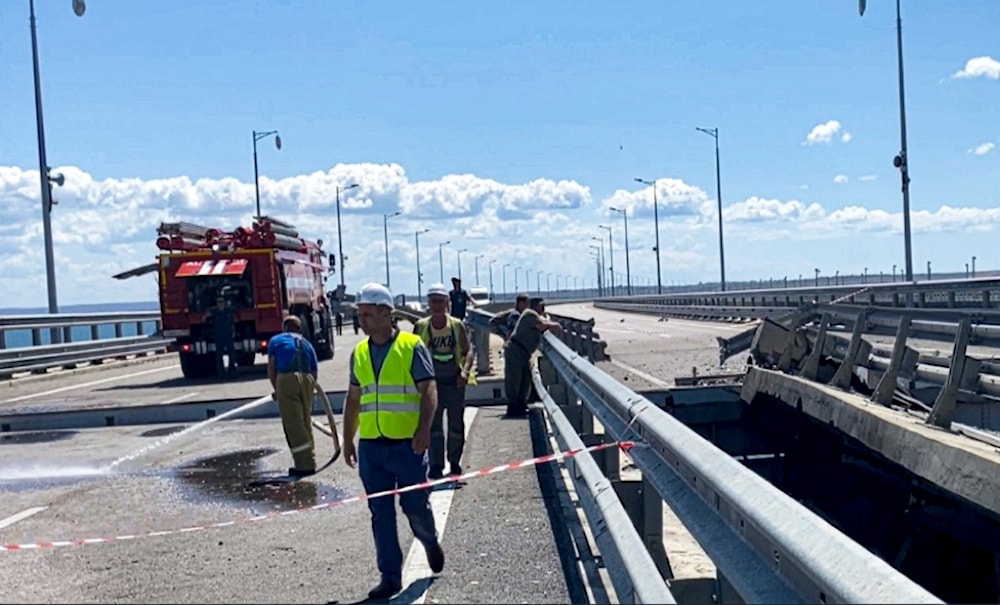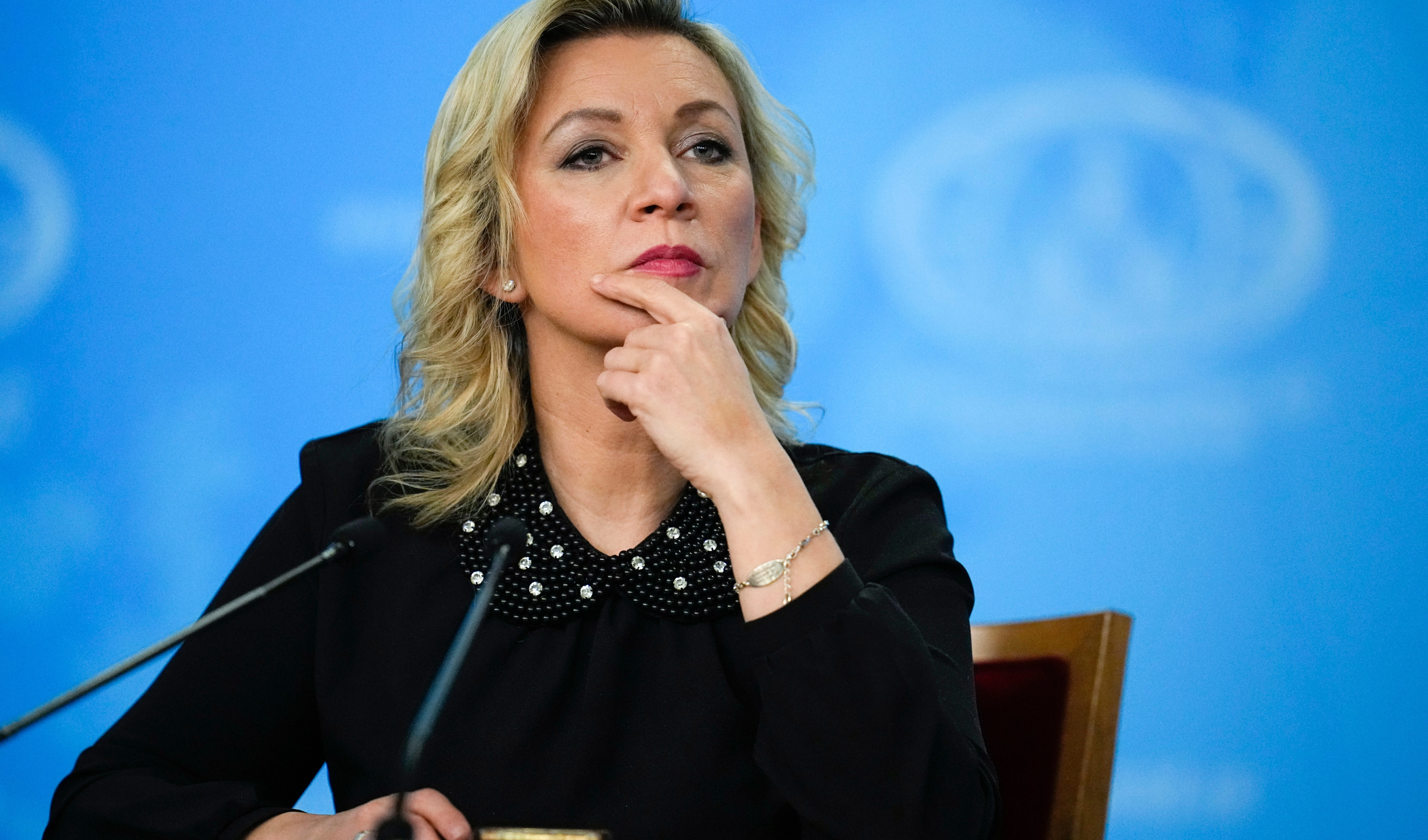Operation Lunar Hail: Ukraine targeted Crimean Bridge with US ATACMS
Ukraine, in cooperation with the United States, carried out strikes on the Crimean Bridge in an unsuccessful operation that resulted in minimal damage.
-

Employees work on the damaged parts of an automobile link of the Crimean Bridge connecting the Russian mainland and Crimean peninsula over the Kerch Strait (Screengrab from a video by the Russian National Antiterrorism Committee)
In the summer of 2024, Ukraine launched a large-scale military operation, codenamed Lunar Hail, targeting Russian military infrastructure in Crimea, The New York Times revealed on Saturday in a report covering the role played by the United States in Ukraine's operations against Russia.
As part of the campaign, Ukrainian forces struck the Crimean Bridge with American-supplied long-range ATACMS missiles. While the strike damaged the bridge, it ultimately failed to destroy it, as the United States had warned.
The United States proposed Operation Lunar Hail to pressure Russia by striking key infrastructure in Crimea, forcing a reallocation of Russian resources on the peninsula.
Of the nearly 100 targets selected, Ukraine viewed the Crimean Bridge as the most significant, given its strategic and symbolic importance to Moscow.
According to The New York Times, Ukrainian President Volodymyr Zelensky was determined to destroy the bridge, which serves as a critical supply route between Russia and Crimea.
Initially, attacks on the Crimean Bridge were considered a red line for Washington. However, after securing an agreement under Lunar Hail, the White House authorized US military and intelligence agencies to secretly collaborate with Ukraine and Britain on an attack plan.
A failed attempt to destroy the bridge
The initial plan called for a two-phase attack: first, using ATACMS missiles to weaken the bridge, followed by naval drone strikes on its piers. However, Russian forces had fortified the bridge’s pylons, prompting Ukraine to propose relying solely on ATACMS missiles.
This approach was met with skepticism from the commander of United States European Command, General Christopher Cavoli, and the commander of Security Assistance Group–Ukraine, Lieutenant General Antonio Aguto, who doubted the missiles alone would be sufficient. They advised Ukraine to wait until the naval drones were operational or to abandon the strike altogether.
Despite these concerns, the operation proceeded.
In mid-August 2024, Ukraine launched ATACMS missiles at the Crimean Bridge, causing visible damage described as "potholes" in the structure. However, Russia quickly repaired the damage, minimizing the long-term impact of the strike.
A US official, speaking to The New York Times, expressed frustration over Ukraine’s insistence on the attack, stating, "Sometimes they have to try and fail to see that we are right."
'Broader successes'
Despite the failed attempt to destroy the bridge, Operation Lunar Hail achieved several key objectives, according to the report. Ukrainian strikes allegedly forced Russian warships, aircraft, command posts, weapons depots, and repair bases to relocate from Crimea. The New York Times described the broader operation as successful, with significant damage allegedly inflicted on Russian infrastructure.
The exact date of the Crimean Bridge attack remains unclear, though reports suggest it may have occurred on August 16, 2024. On that day, explosions were reported in several locations across occupied Crimea, including Sevastopol, Kerch, and Feodosia.
Russian authorities temporarily blocked traffic on the bridge. Meanwhile, Russia’s Ministry of Defense said 12 ATACMS missiles targeting the structure were intercepted and denied any significant damage.
As Ukraine continues its efforts to reclaim occupied territories, the outcome of Operation Lunar Hail underscores both the challenges and the impact of Western-supplied weapons in the ongoing war.
Germany planned to destroy bridge
The editor-in-chief of Russia Today, Margarita Simonyan, claimed last March she had a nearly 40-minute-long leaked audio which said the German Bundeswehr was planning to destroy the Crimean Bridge.
Simonyan went on to submit official inquiries to German diplomatic figures, seeking clarification about the issue that would terribly impact Russian-German relations, as well as NATO's involvement in the Ukraine war.
The leak, which is 38 minutes long and dated February 19, reveals officers discussing the operational and targeting details of the homegrown Taurus long-range missiles, which Germany was mulling sending to Ukraine. Interestingly, the way it was being discussed insinuated that it had already been agreed upon.
The officers were also discussing means of maintaining plausible deniability so that Germany could tread as closely as possible to the "red line" of direct involvement without crossing it.

 4 Min Read
4 Min Read











